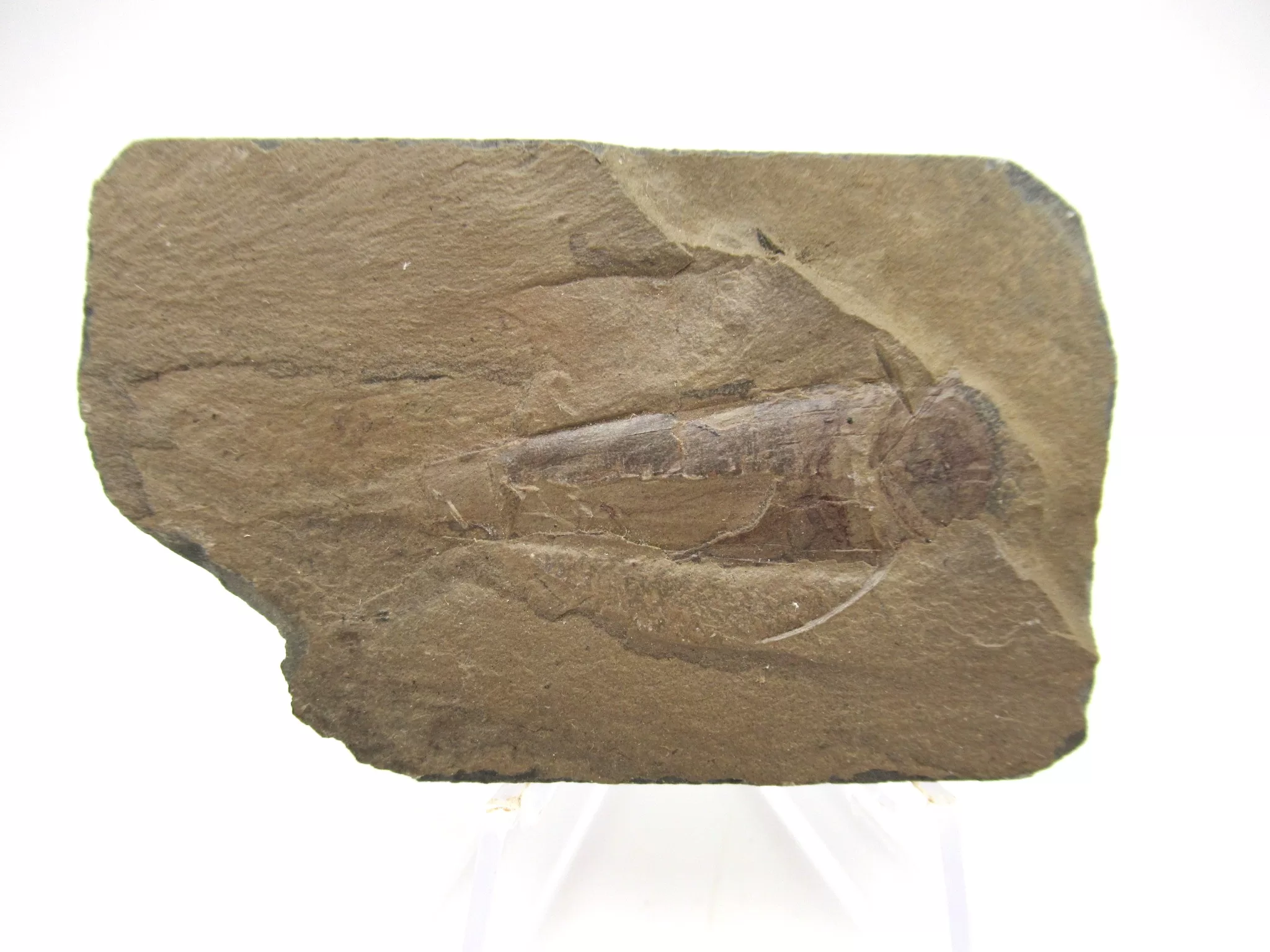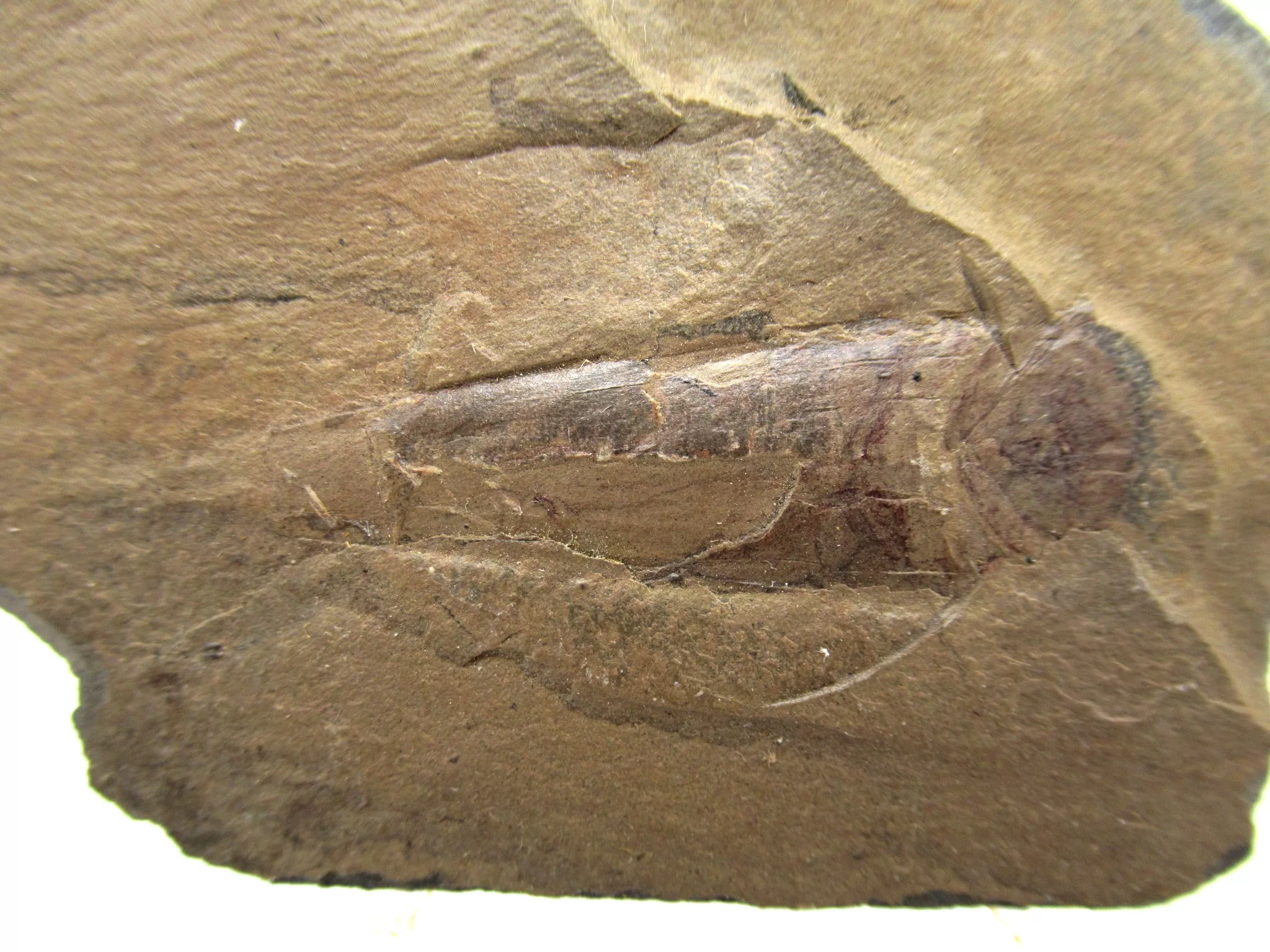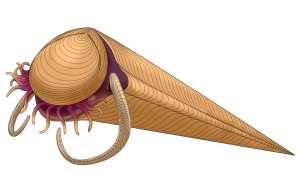Description
Idaho Hyolithes Cambrian Mollusc (Cephalopod*)
- Hyolithes cecrops
- Middle Cambrian Age
- Spence Shale
- Paris, Idaho
- This Cambrian Mollusca is embedded in the matrix that measures 2.63″ long
- MORE Fossil Cephalopods for Sale
A study in 2019 estimated that hyoliths are more likely to be basal members of the lophotrochozoans rather than lophophorates. Meanwhile, a study in 2020 instead concluded that hyoliths belong to Mollusca, as did a different study in 2022.
Molluscs are a large phylum of invertebrate animals, many of which have shells. The phylum is typically divided into 7 or 8 taxonomic classes, of which two are entirely extinct.
Cephalopod* molluscs, such as squid, cuttlefish, and octopuses, are among the most neurologically advanced of all invertebrates. The gastropods (snails and slugs) are by far the most numerous molluscs and account for 80% of the total classified species. Molluscs are the largest marine phylum, comprising about 23% of all the named marine organisms. Numerous molluscs also live in freshwater and terrestrial habitats. They are highly diverse, not just in size and anatomical structure, but also in behaviour and habitat.
Drawing by Qohelet12







